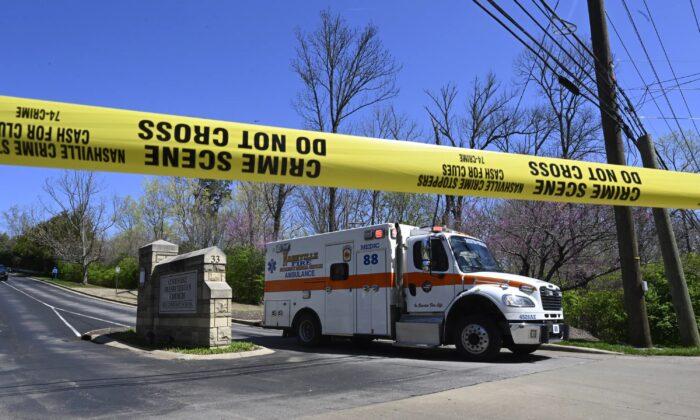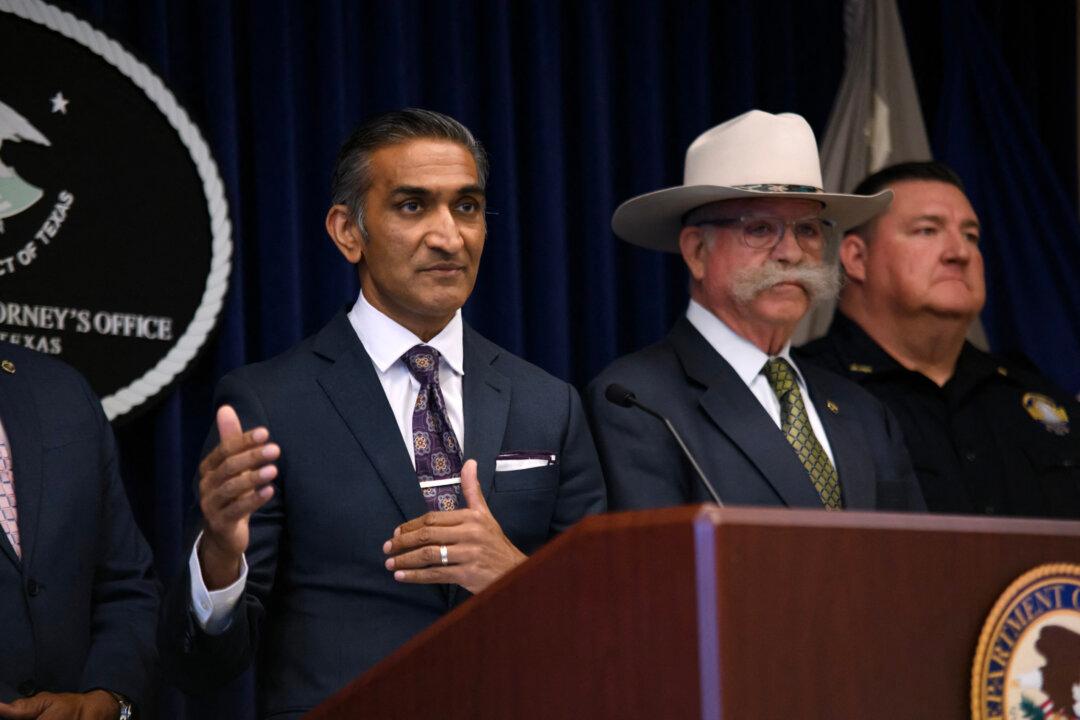Existing traffic cameras set up across America to find speeding and red light scofflaws are being replaced by smarter, artificial intelligence-fueled versions equipped with upgraded software that for the first time gives the government the ability to monitor behavior inside of private vehicles, raising the alarm of privacy advocates.
“The public should be rightly concerned,” Electronic Frontier Foundation Senior Policy Analyst Matthew Guariglia told The Epoch Times. “Congress has completely abdicated their responsibility to protect people’s privacy.”
The Biden administration’s 2022 $2.2 trillion infrastructure legislation has led to a dramatic rise in new traffic cameras after federal guidance issued after the bill became law allowed many states to invest in surveillance equipment. Previously, transportation funds allocated to states were limited to fund infrastructure projects, such as repairing roadways and bridges, with the spending of federal funds for cameras only permitted for school zones. However, the Biden administration authorized states to utilize up to 10 percent of the bill’s $15.6 billion highway safety funds to purchase cameras and other “automated traffic enforcement” tools—and many did just that.
The most recent data compiled last year by Comparitech, a consumer advocacy group focused on cybersecurity, found that the number of cameras on American streets has exploded, with the average city having around six cameras per 1,000 people while the most-watched city, Atlanta, Georgia, has nearly 50 cameras per 1,000 people. Data revealing the current number of traffic cameras is unavailable, but is expected to be significantly larger.
The decision to open the infrastructure funding to traffic cameras came as an attempt to decrease traffic-related deaths, according to officials.
“Almost 95 percent of our Nation’s transportation deaths occur on America’s streets, roads, and highways, and they are on the rise,” U.S. Transportation Secretary Pete Buttigieg said in the National Roadway Safety Strategy release following passage of the legislation.
However, many see the increase in surveillance technology as a cash grab for cities trying to make up for post COVID budget shortfalls. In March, Washington Mayor Muriel Bowser proposed adding hundreds of new traffic cameras to city streets to compensate for a projected drop in revenue of nearly $400 million. Priya Sarathy Jones, deputy executive director of the Fines and Fees Justice Center, told Reuters that cameras monitoring traffic are “one of the easiest things for us to turn to and generate revenue quickly.”
Further, software upgrades that allow for the ability to analyze the inside of vehicles and the behaviors of the drivers and passengers have raised concerns among privacy advocates of an increasingly intrusive government that would have seemed straight out of a dystopian science fiction novel to past generations.
In the United Kingdom, authorities have already issued hundreds of fines to drivers after AI traffic cameras were used to detect violations such as not wearing a seatbelt.
United Kingdom Civil Liberties campaigner Jake Hurfurt, of Big Brother Watch, told the newspaper The Sun, “This kind of intrusive and creepy surveillance which treats every passer-by as a potential suspect is excessive and normalizing. It poses a threat to everyone’s privacy.”
“People should be free to go about their lives without being analyzed by faceless AI systems.”
In July, local governments in Australia installed new phone-detection cameras along roads to spot drivers who are texting on their mobile devices.
In America, cities like Seattle, Tacoma, and San Francisco, and Reno have also adopted AI traffic cameras with the stated goal of improving the flow of traffic. Los Angeles and New York have also discussed utilizing the technology.
While the Fourth Amendment to the U.S. Constitution offers protection against video searches conducted by the police, there are currently no general, legally enforceable rules to limit privacy invasions.
Mr. Guariglia warns that the ethical lines between the need for public safety and an Orwelian police state can sometimes become blurred with advances in technology.
“I can definitely see it coming where cameras are doing analytics on passengers inside of a car,” said Mr. Guariglia. “This could make citizens susceptible to police surveillance in giving up the knowledge of where they worship, what lawyer they are going to see, or which reporters they are talking to.”
In at least one other country, residents have already begun fighting back against the technology.
After London rolled out an expansion of its Ultra Low Emission Zone program, which uses AI traffic cameras to identify and fine drivers of older vehicles who enter the city, many citizens showed their outrage through acts of vandalism. Police say this month hundreds of intelligent cameras have been damaged, disconnected, or stolen by a vigilante group who call themselves the Blade Runners.
“The cameras are going to keep coming down,” Nick Arlett, an organizer of the protests, told CBS News. “People are angry.”







